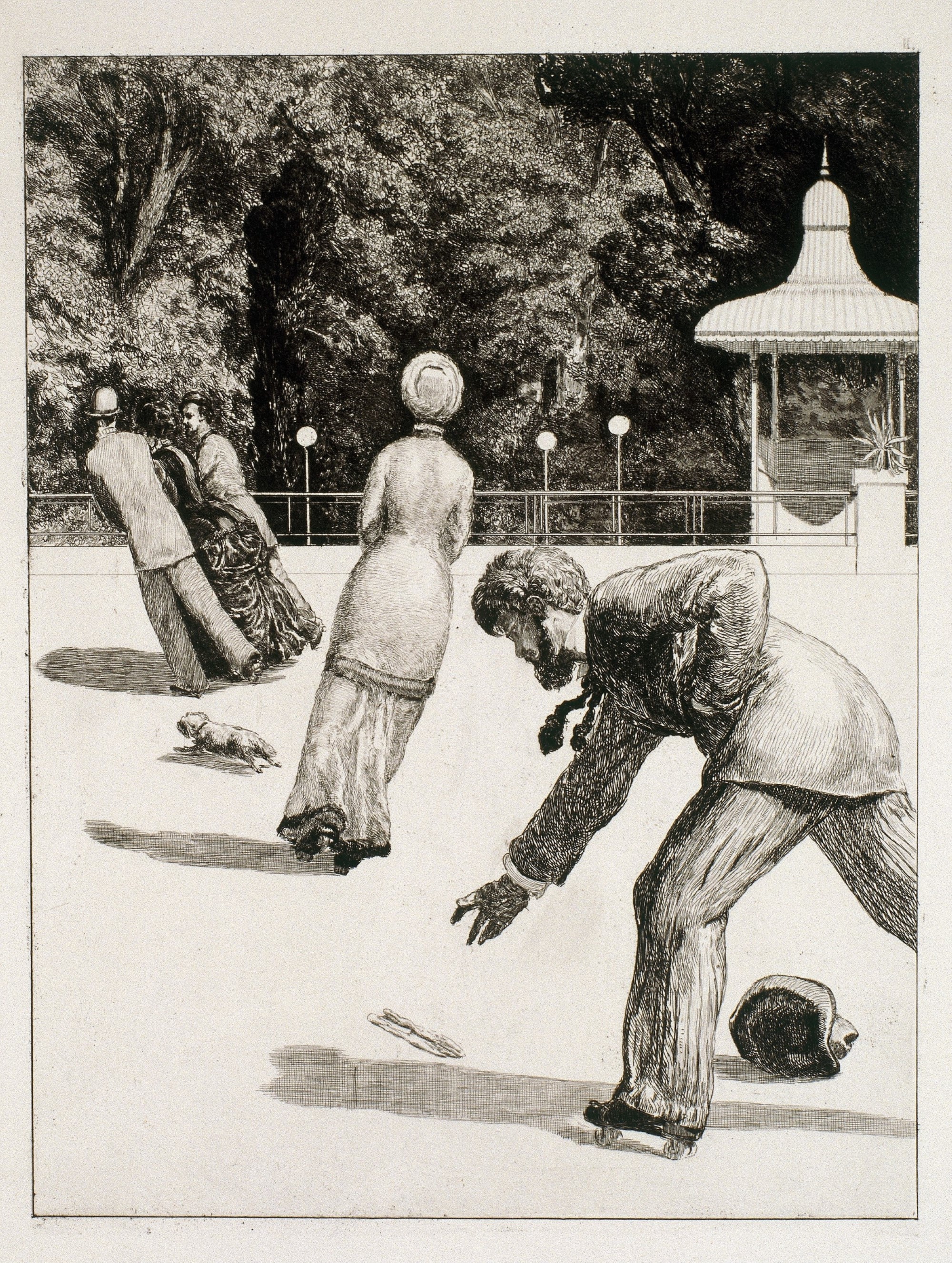The Kunstverein in Bremen owes its rich collection of Max Klinger’s prints to the important patron Dr. H. H. Meier, Jr., who had served as chairman of the Kunsthalle several times. Dr. Meier maintained a lively correspondence with the artist until the former’s death in 1905, and collected the best pulls of his prints. Klinger was 22 years old when he began working on the etching series titled A Glove, which was to become his most famous and groundbreaking cycle of works. The action of the scene can be traced back to his biography. At the roller-skating rink in Berlin- Hasenheide, Klinger found a glove that had been lost by the beautiful “Brazilian girl named T.” She was the daughter of a diplomat in Berlin, and Klinger had fallen unhappily in love with her at the end of 1877. Whereas the first two pages portray what went on at the roller-skating rink, in the subsequent pages, Klinger enmeshed reality with fantasy by depicting in erratically abrupt and seemingly surreal sequences the fears, wishes, and desires of a man unhappily in love. These fantastical dream experiences are all linked to the glove, a pledge of love.
en

